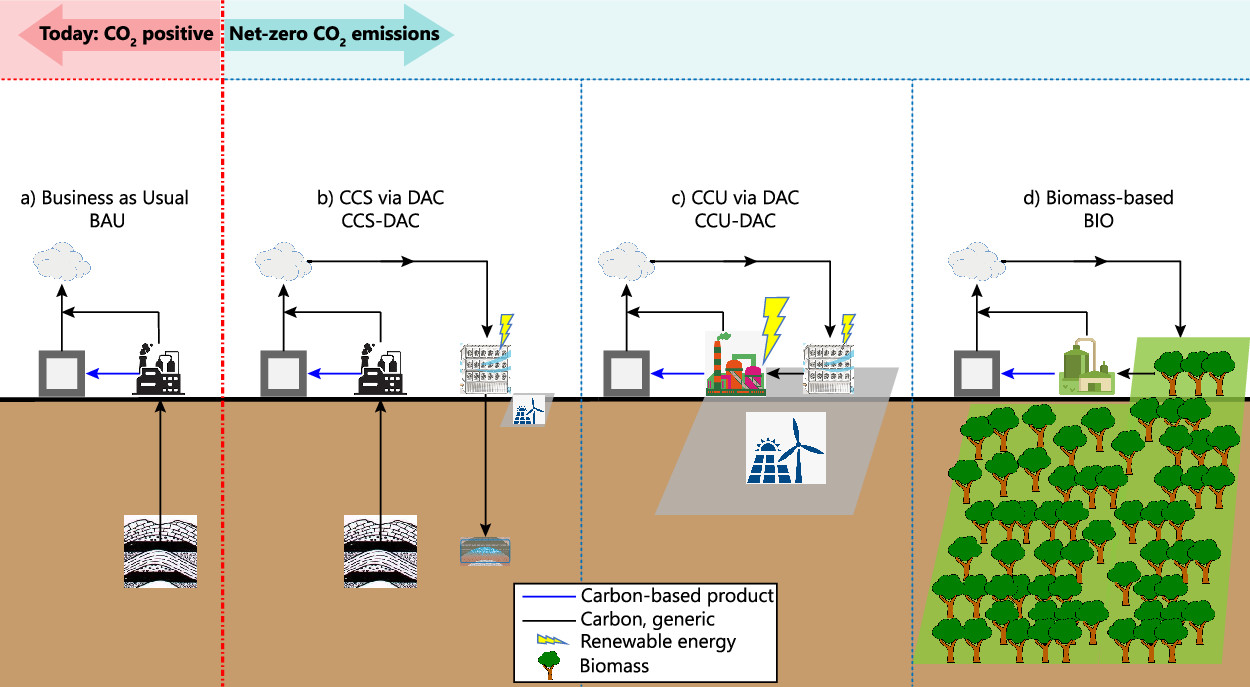Ahmedabad
(Head Office)Address : 506, 3rd EYE THREE (III), Opp. Induben Khakhrawala, Girish Cold Drink Cross Road, CG Road, Navrangpura, Ahmedabad, 380009.
Mobile : 8469231587 / 9586028957
Telephone : 079-40098991
E-mail: dics.upsc@gmail.com

Storage hurdle on Net Zero Track
News: In this editorial we will discuss about India’s push for De-carbonization and storage challenges it is likely to face in the course.
What is Net Zero?
Net zero refers to the balance between the amount of greenhouse gas (GHG) that's produced and the amount that's removed from the atmosphere. It can be achieved through a combination of emission reduction and emission removal.
Why do we need adequate storage facilities?
India’s push towards decarbonisation has to be backed with adequate storage facilities, without which it clearly cannot go forward beyond a point. This is because of two reasons.
The first is that the storage will handle the intermittency problem (due to sudden cloud cover or drop in wind velocity) of renewables.
Second, coal-based generation cannot be phased out till such time as we can rely on stored energy to provide electricity in the non-solar hours.
What are the storage options before us? What are their limitations?
3 options are available. I) Hydrogen Based Storage II) Lithium Ion Batteries III) Pump Storage Plants
Hydrogen Based Storage - It is found to be feasible for long-term storage, meaning across seasons. One can use this stored energy, for example, in situations when coal mining goes down (which happens during monsoons) affecting thermal generation or when hydro generation depletes due to low reservoir levels.
Lithium Ion Batteries - For day-to-day storage and dissipation, batteries are still the ideal source. However, for the first time since 2010, the cost of batteries has increased due to increase in cost of Lithium and battery components.
Pump Storage Hydropower Plants - India has a total capacity of about 4.7 GW (out of a worldwide capacity of 169 GW, China alone accounting for about 32 GW) but only 3.3 GW is functional. Pump storage plants have not really grown in India due to several factors, including high investment costs, long gestation periods, non-remunerative pricing models and lack of adequate sites having the topography that is required for operating a pump storage plant.
What are other hurdles apart from Storage that may hamper our Net Zero targets?
The Financial condition of our Distribution companies (Discoms)
The additional solar and wind capacity has to come from the private sector and no developer is going to come forward unless there is some credible payment security mechanism.
Problems with land acquisition, and securing the right of way for laying down transmission lines will also continue to hinder progress.
Conclusion
The target of having 500 GW of non-fossil generating capacity by 2030 may sound impressive but may prove to be elusive unless we can enhance our storage capacity through not only batteries but also pump storage plants.

Address : 506, 3rd EYE THREE (III), Opp. Induben Khakhrawala, Girish Cold Drink Cross Road, CG Road, Navrangpura, Ahmedabad, 380009.
Mobile : 8469231587 / 9586028957
Telephone : 079-40098991
E-mail: dics.upsc@gmail.com
Address: A-306, The Landmark, Urjanagar-1, Opp. Spicy Street, Kudasan – Por Road, Kudasan, Gandhinagar – 382421
Mobile : 9723832444 / 9723932444
E-mail: dics.gnagar@gmail.com
Address: 2nd Floor, 9 Shivali Society, L&T Circle, opp. Ratri Bazar, Karelibaugh, Vadodara, 390018
Mobile : 9725692037 / 9725692054
E-mail: dics.vadodara@gmail.com
Address: 403, Raj Victoria, Opp. Pal Walkway, Near Galaxy Circle, Pal, Surat-394510
Mobile : 8401031583 / 8401031587
E-mail: dics.surat@gmail.com
Address: 303,305 K 158 Complex Above Magson, Sindhubhavan Road Ahmedabad-380059
Mobile : 9974751177 / 8469231587
E-mail: dicssbr@gmail.com
Address: 57/17, 2nd Floor, Old Rajinder Nagar Market, Bada Bazaar Marg, Delhi-60
Mobile : 9104830862 / 9104830865
E-mail: dics.newdelhi@gmail.com